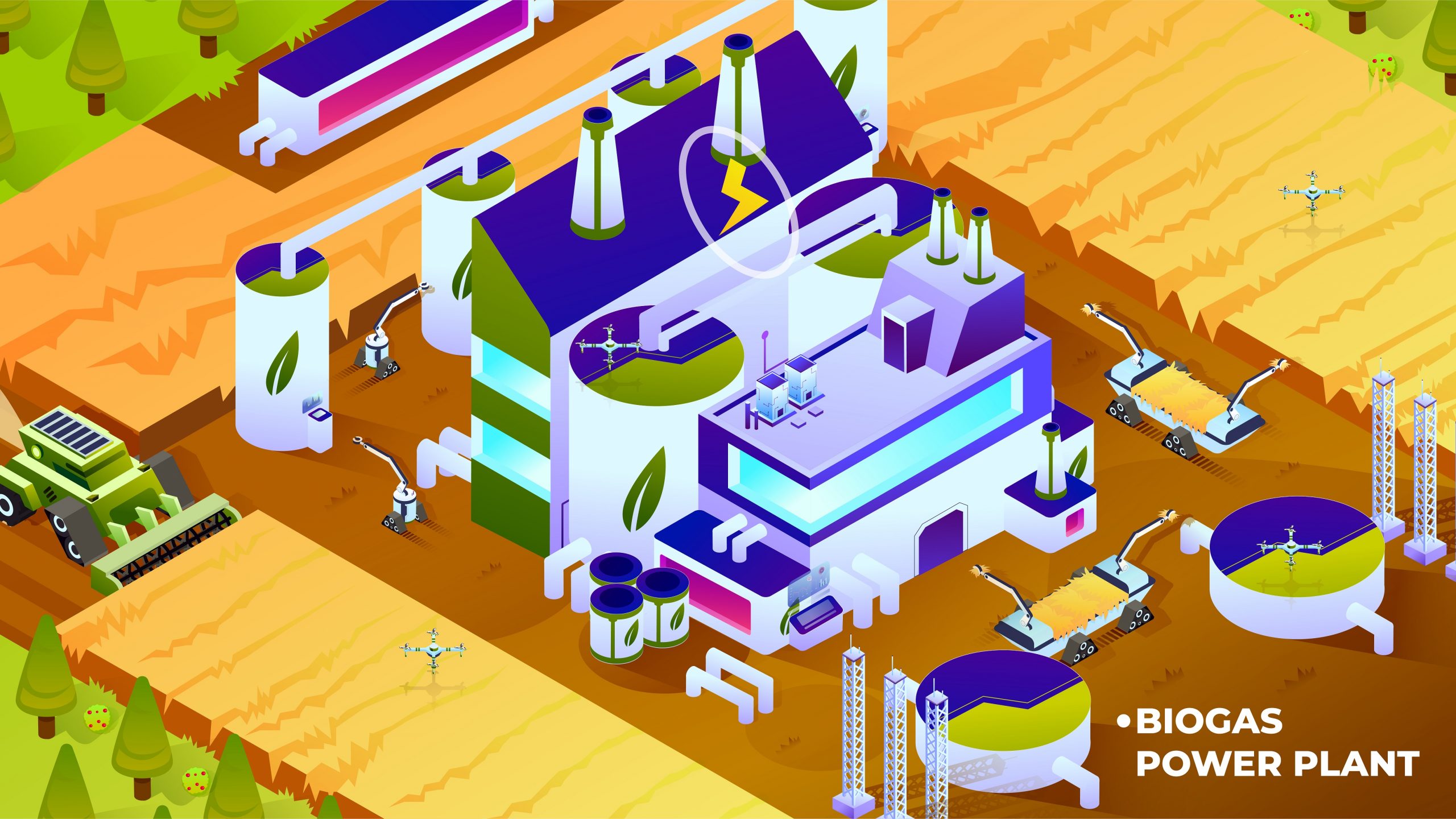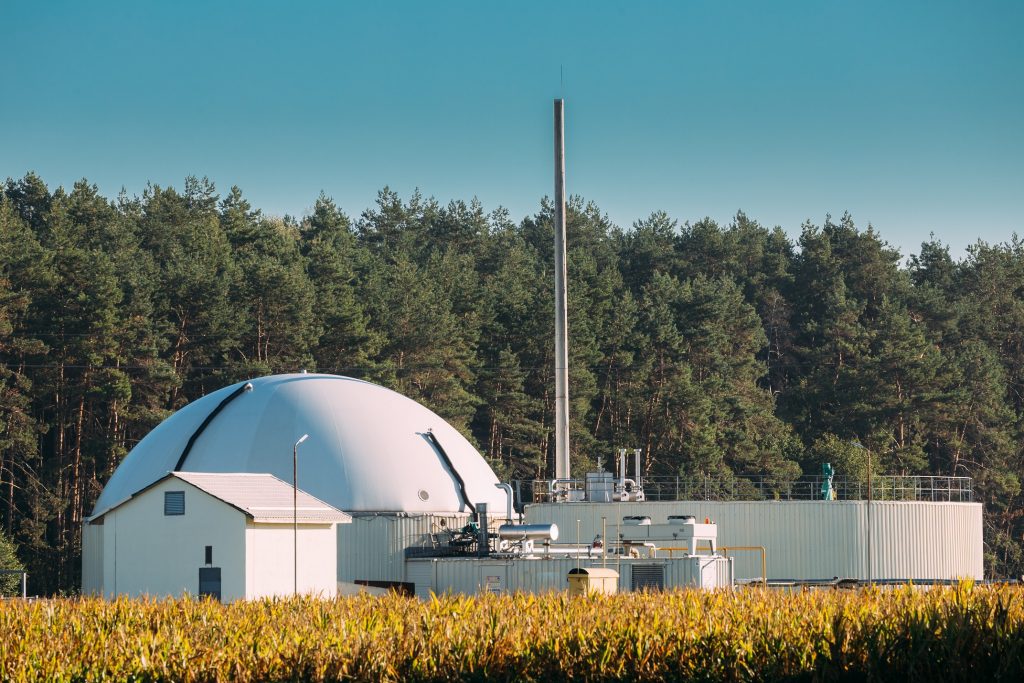
What is Biogas Plant? Biogas is a form of renewable energy that is produced by the breakdown of organic matter. This process often happens naturally in landfills where organic waste is often dumped untreated. It gets buried under the heap along with inorganic plastic. And compressed under the weight, therefore leaving it lacking in oxygen.
This helps anaerobic bacteria find the perfect conditions to consume this waste. And release various greenhouse gases as a byproduct. Some places try to capture these gases using special landfill collection systems. Which are then processed to get usable biogas. This is more ideal than just letting these toxic gases release straight into the atmosphere. But it still isn’t the ideal way of creating biogas.
A better solution is the use of dedicated biogas plants, where biogas is produced by fermenting biomass. The substrate used for the production often consists of agricultural waste materials. Such as manure, discarded crops, and other food waste. As well as municipal and industrial sewage. Of course, the list of raw materials used is significantly longer. But for now, we are only focusing on the ones that are present in significant quantities.
Most people often confuse biogas plants with underground manure pits. Which are often used to convert organic waste into usable manure. These systems are relatively simple to create and don’t cost a lot of money. But they are also aerobic digesters, which aren’t ideal for biogas production.
Biogas plants, on the other hand, use an anaerobic process, which requires a lack of oxygen. This is why the construction of said plants requires a bit more money. And features special chambers to handle different parts of the process.
In general, a biogas plant has four major components that make up the production process:
Each step requires special equipment and can be scaled up to handle all sorts of organic loads. Depending on your budget, we can even add a specialization to each process. To make the production more efficient, and create higher quality biogas.
This added complexity can vary the overall length of the biogas production process. The final design often depends on the substrate, and if the fermentation process is wet or dry.
For substrates such as manure, wet fermentation is used. While dry or solid-state fermentation is more suited for stackable organic biomass such as municipal biowaste.
Whatever process is used in a biogas plant, in the end, it works when these special bacteria start breaking down the organic matter in the absence of light and oxygen. The substrate is periodically shifted by the use of agitators. Which are basically large propellers that help prevent the formation of surface scum and sinking layers. They also allow the biogas to rise more easily.
The conditions are kept as such, that this micro-bacteria only use a small part of the energy contained. While leaving the rest of non-usable energy as a waste product, in the form of biogas.

At this stage of the process, the gas includes various components including methane, carbon dioxide, water, and hydrogen sulfide. There are also other contaminants that are produced in smaller quantities. They can be quite harmful to the environment if released untreated. Which is one of the main reasons containers should be made of steel. As they can withstand the corrosive effects of these gas for longer periods.
This post-treatment is required to convert crude biogas to natural gas quality. Which starts with the removal of substances such as carbon dioxide, hydrogen, oxygen, and sulfur from the biogas. While the rest of the substances are equally important to get rid of. Desulfurization is one of the key final steps of this process, as it helps make the biogas safe for transport. This is done by an iron-containing filter material, or by the addition of oxygen. In a final step, the gas is dehumidified and can then be used to generate electricity and heat. For this, some biogas plants even feature separate combined heat and power units (CHP). In most cases though, the purified biogas is simply fed into the gas grid and transported to points of consumption.
These are the various parts of a biogas plant. As you can see, each plays a vital role in the production of biogas, as well as in making it usable as a fuel. Depending on the budget of the plant in question, these individual components can be scaled up to handle thousands of kgs of waste with ease. In India, we have over 163 such biogas plants, that help us tap into the unused potential of organic waste. We can only hope that with time this number will increase. As biogas is a truly renewable source of energy.
Leave a Reply